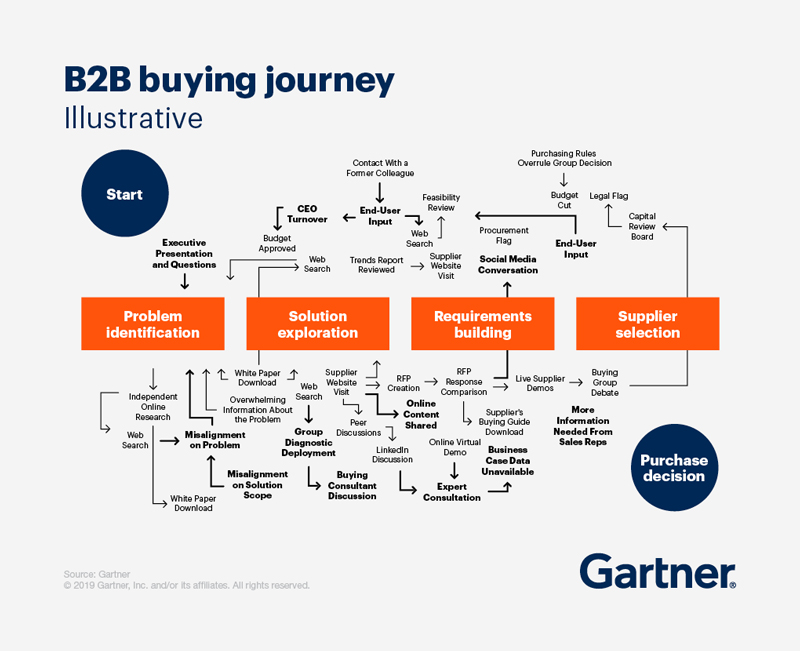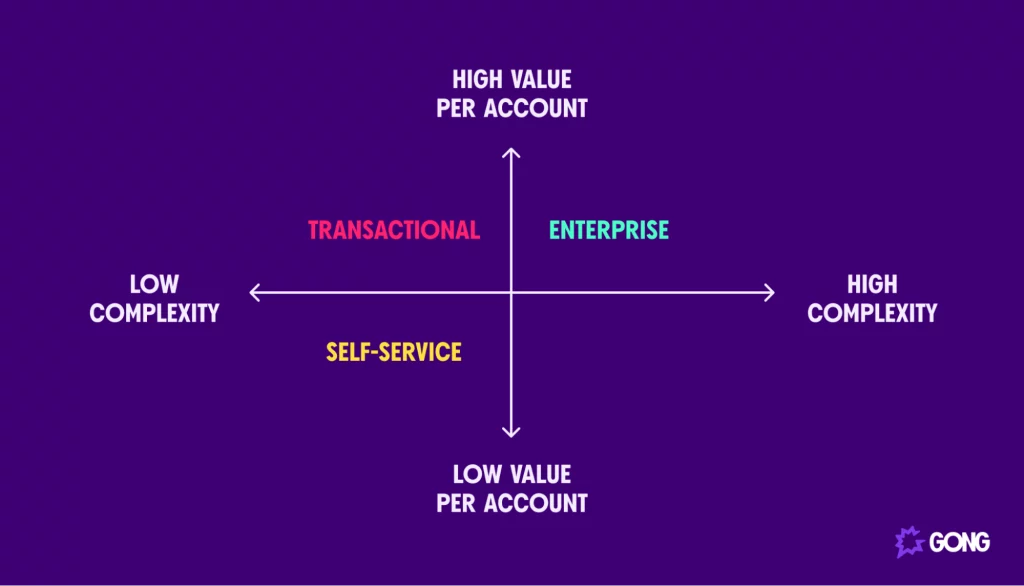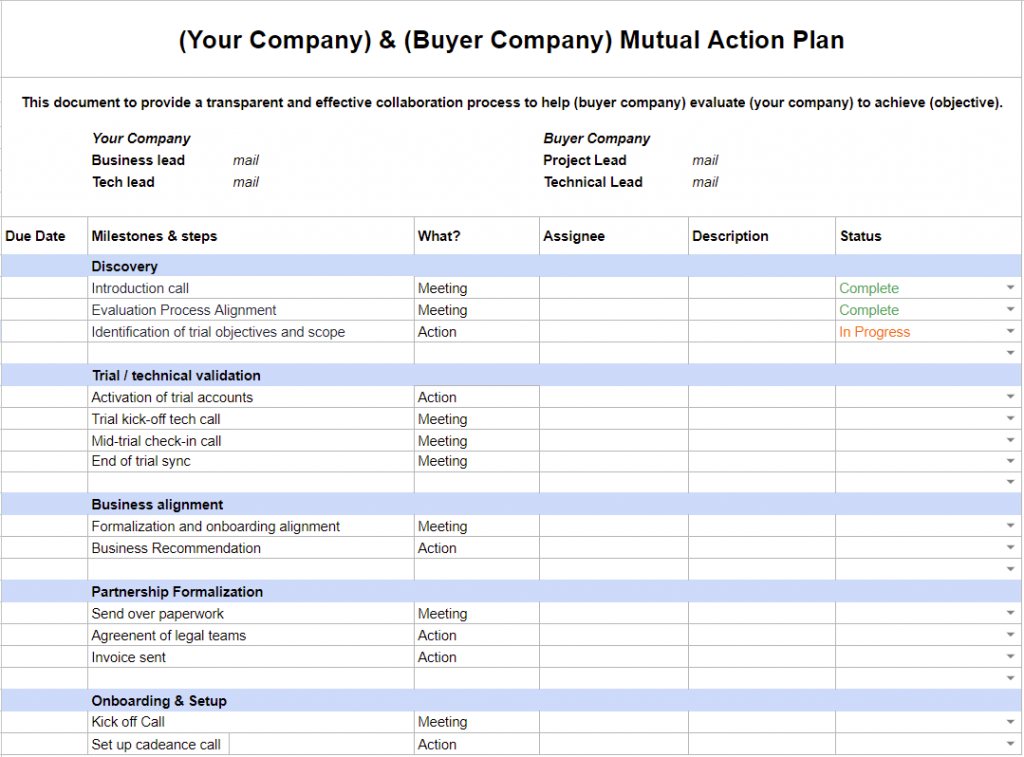Mutual Action Planning for Enterprise Sales Success

What is mutual action planning and how does it benefit enterprise sales?
A mutual action planning (MAP) tool is a collaborative tool that helps teams align on goals, strategies, and action steps towards achieving mutual objectives. Improtantly, it fosters communication, accountability, and transparency among team members. Want to ensure everyone is on the same page and working towards shared success? Use this mutual action plan template or a MAP software by Stageset to collaborate with your sales team at each stage of the deal.
Key Highlights
-
- Mutual Action Plans are tools for salespeople to ensure success and close deals.
-
- A successful MAP includes engaging stakeholders, setting clear goals and milestones, and choosing the right collaboration tools.
-
- Implementing MAPs in early client engagement helps salespeople transition from order-takers to project leaders.
-
- Advanced techniques and tools, such as digital sales rooms, can enhance MAPs and improve collaboration.
Stuck in an enterprise sales deal with no roadmap? Enter Mutual Action Planning
In B2B settings, teamwork between the seller and the buyer are vital. Salespeople need relevant tools to guide their buyers through the process and stand out. One such useful tool is the Mutual Action Plan tool (MAP), which maps out steps, goals, and resources for both teams.
Adopting a successful MAP tool involves knowing the sales process as the back of a hand, identifying key people involved, and mastering collaboration and communication. By excelling in making and using MAPs, salespeople can become trusted partners and prove their sales skills.
This blog discusses Mutual Action Plans in B2B sales, their role in B2B success, key parts of a good MAP, advanced techniques and mutual action plan platform examples, as well as common questions.

Where do I start? Ask the right questions
Sales superheroes, it’s time to put your plan of action into motion and craft your first MAP. With the right questions and a clear understanding of your stakeholders’ needs, you can set the stage for sales success.
Identify Stakeholders and Their Roles
When crafting a Mutual Action Plan (MAP), it’s important to ask which stakeholders have a say in the process and clearly define their roles. Stakeholders can include team members from both teams, as well as external partners or consultants.
Each stakeholder has a unique role to play in the success of the buying process. Including all stakeholders in the plan may ensure that everyone is aligned. This collaboration and clarity of roles will help streamline the sales process and increase the chances of hitting quota.
Set Clear Goals, Define Milestones and Agree on Timeline with your champions
Setting clear goals and milestones is essential for a successful MAP. Here are some key components to consider:
-
- Define Measurable Goals: Clearly define the goals you want to achieve with the MAP. Make sure they are specific, measurable, achievable, relevant, and time-bound (SMART).
-
- Establish Milestones: Break down the goals into smaller, achievable milestones that can be tracked and measured.
-
- Create a Roadmap: Develop a timeline or roadmap that outlines the sequence of activities and milestones.
-
- Assign Responsibilities: Clearly assign responsibilities to individuals or teams for each milestone or task.
By setting clear goals and milestones, salespeople can track progress, stay focused, and ensure that the MAP is moving forward towards mutual success.
 Image Source: Gong. Mutual action planning is proven to increase the efficiency of sales reps and odds of successful enterprise sales.[/caption]
Image Source: Gong. Mutual action planning is proven to increase the efficiency of sales reps and odds of successful enterprise sales.[/caption]
Choose a fitting Mutual Action Plan software
Collaboration is key in digital sales, and choosing the right tools can enhance the collaboration process. Digital Sales Room software by Stageset provides the perfect platform for sales teams and clients to work together effectively.
This digital sales room software allows you to create a centralized space where all relevant documents, resources, and discussions can be accessed and shared. This not only improves communication and collaboration but also ensures that everyone is working with the most up-to-date information.
Collaborative workspaces enable real-time collaboration, allowing team members to work together on tasks, share feedback, and track progress. These tools streamline the buying process, improve efficiency, and foster a sense of teamwork and accountability.
Why should I care about mutual action plans when I get by just fine?
Use a Mutual Action Planning tool early in the Pipeline
By implementing Mutual Action Plans (MAPs) in early client engagement, you can build a strong pipeline, close deals faster, and establish yourself as a trusted project leader.

Transition from silent Order-Taker to collaborative Project Leader
It’s time to ditch the order-taker mentality and step into the role of a superhero who guides clients through the process with clarity and purpose. When leveraging a Mutual Action Plan (MAP), any seller will automatically appear more professional as in “they have their stuff together”. It’s a great way to stand out from thousands of other sellers doing same things. Plus, Stageset is free for individual sellers.
Customizing MAPs for Different Sales Scenarios
Mutual Action Plans (MAPs) can be customized to suit different sales scenarios and specific needs. Each client and sales situation is unique, and a one-size-fits-all approach may not be effective.
When customizing MAPs, salespeople should consider factors such as the client’s industry, goals, timeline, and resource availability. By tailoring the MAP to the specific needs of the client, salespeople can create a more personalized and effective sales plan.
Customization can involve adapting the milestones, goals, and action items to align with the client’s objectives and constraints. This level of customization demonstrates a deep understanding of the client’s needs and increases the chances of achieving mutual success.
Conclusion
In the world of enterprise sales, mastering Mutual Action Plans (MAPs) is key to success. These plans lay the foundation for effective collaboration, setting clear goals, and engaging stakeholders. By crafting tailored MAPs, you can transform from an order-taker to a project leader, driving impactful client engagements. Leveraging technology and customization for different scenarios further enhances your sales strategies. Ready to elevate your game? Download now and kickstart your journey towards becoming a legit sales pro!
Frequently Asked Questions
How to make sure I’m aligned with clients with MAPs?
To align clients in Mutual Action Plans (MAPs), salespeople should focus on the benefits of collaboration, provide clarity on the action plan template, and address any concerns or objections. Salespeople can help busy prospects solve their challenges faster and become more engaged in the process with the help of Mutual Action Planning tools.
Can MAPs be Adapted for Small Businesses?
Yes, Mutual Action Plans (MAPs) are also useful for small businesses selling to larger organisations. The key is to customize the MAP to suit the specific needs and resources of those clients. By simplifying the planning, setting realistic goals, and leveraging available tools and resources, SMB can create a tailored MAP that aligns with the unique requirements of large clients.